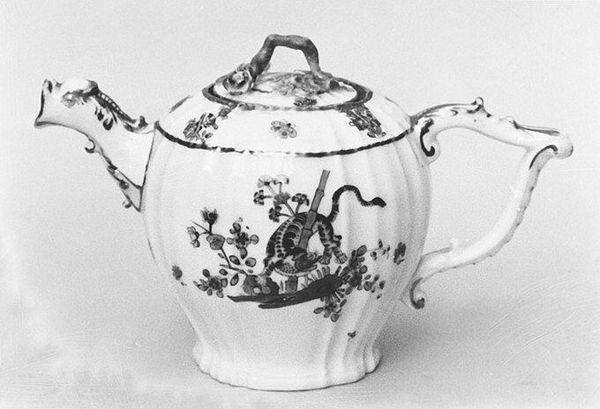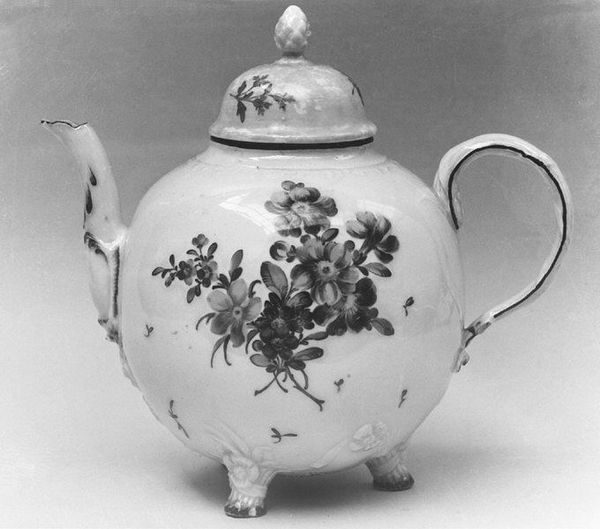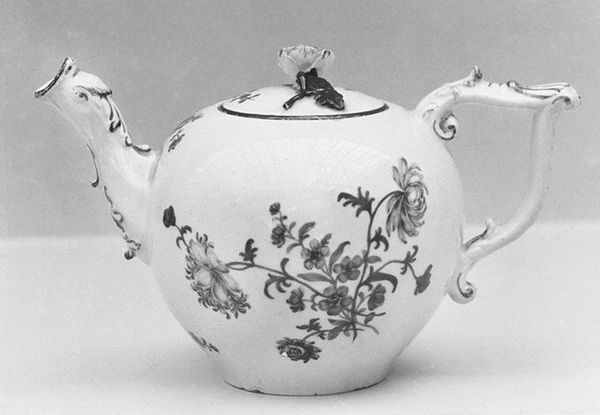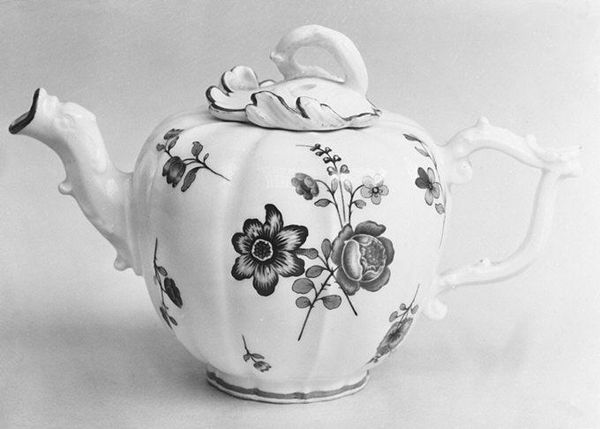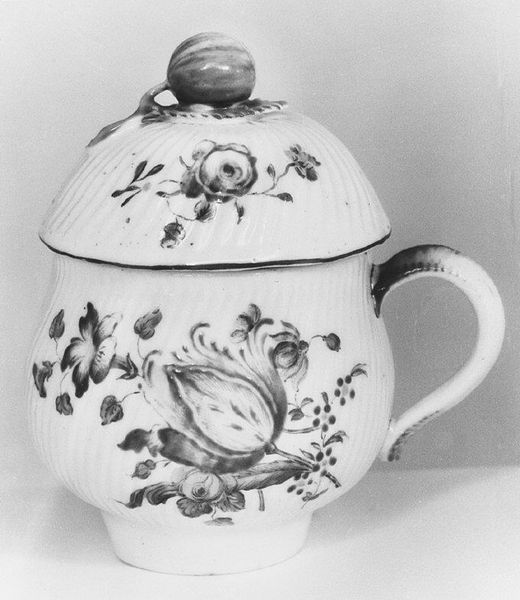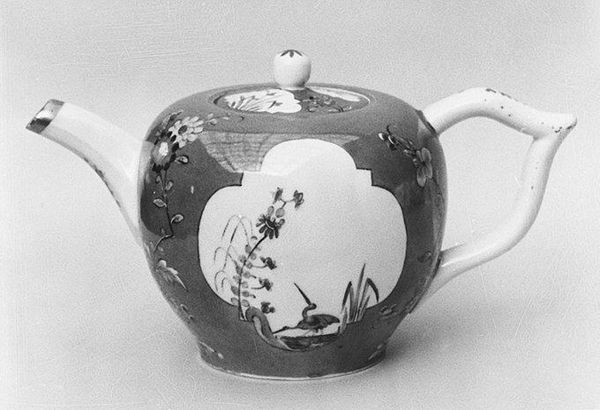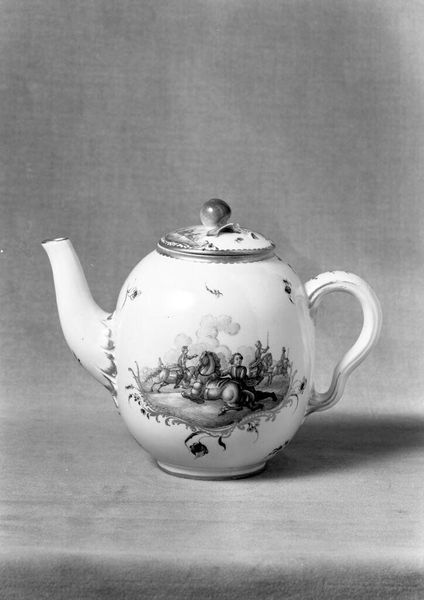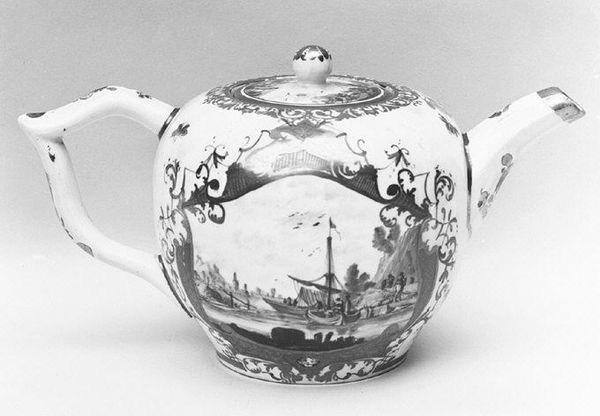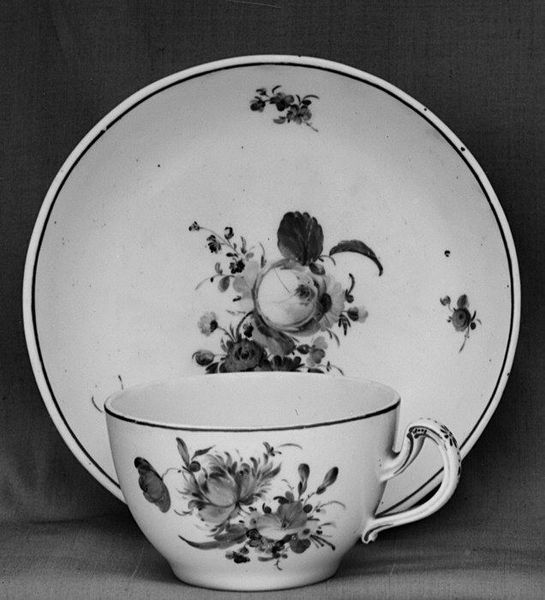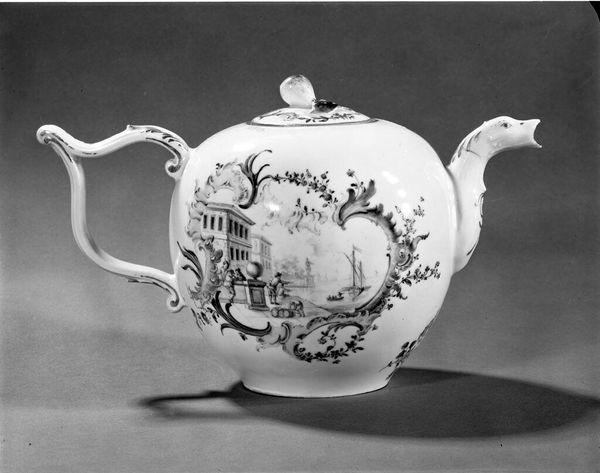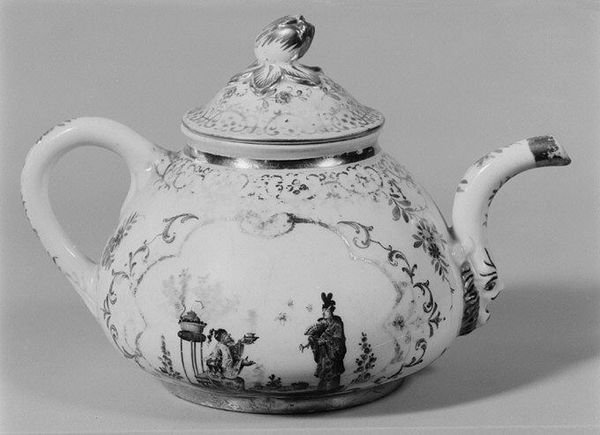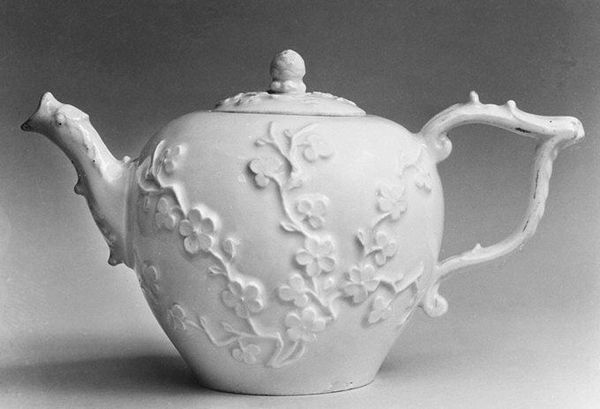
ceramic, porcelain, sculpture
#
ceramic
#
porcelain
#
sculpture
#
decorative-art
#
rococo
Dimensions: Height (with cover): 4 7/8 in. (12.4 cm); Height (without cover): 3 1/2 in. (8.9 cm)
Copyright: Public Domain
This porcelain teapot was produced by the Meissen Manufactory, established in Germany in 1710. At the time, porcelain was known as 'white gold,' as the formula for making it had previously only been known in China and Japan. Augustus II the Strong, Elector of Saxony, sought to replicate it for economic and political gain. This teapot reflects the fashion for chinoiserie. Its decoration suggests a European fantasy of East Asian design, which became fashionable at a time when the West was developing extensive trade routes with China. Note the carefully arranged floral designs within a defined cartouche. Studying the teapot’s production and consumption can reveal much about the cultural exchange and economic competition that shaped early modern Europe. By consulting archival records, trade documents, and design catalogs, the historian can trace the circulation of porcelain and its impact on global markets.
Comments
No comments
Be the first to comment and join the conversation on the ultimate creative platform.
